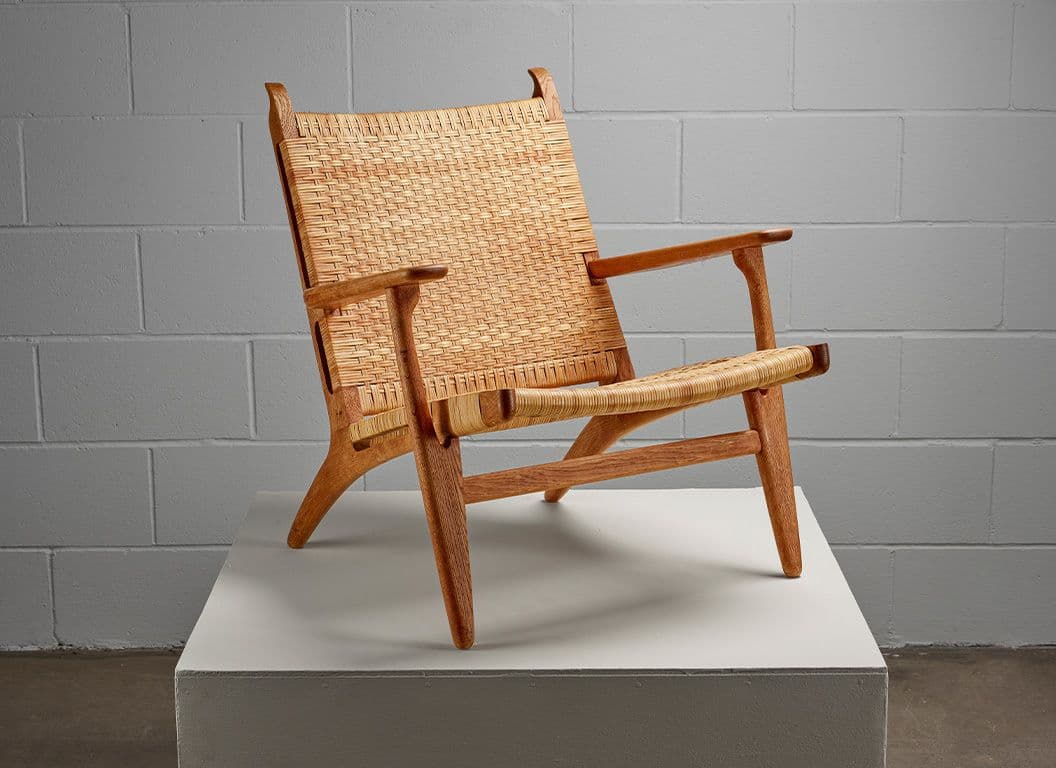Over ninety years have passed since the English designer Gerald Summers, creator of the iconic bent plywood armchair, and his partner, Marjorie Butcher, opened their London shop, Makers of Simple Furniture, in 1931.
The firm’s earnest proprietors saw themselves as outsiders, but their mission to create simple, functional furniture responsive to the requirements of the modern home placed them squarely in the vanguard. While Britain’s modernists debated how to translate “the house-is-a-machine-for-living-in” ethos of European modernism into a style suited to the British temperament, Gerald and Marjorie forged ahead.
In doing so, they trusted in his rational approach to design—the emphasis on function, materials, and methods of manufacture—that he had absorbed as a young engineer’s apprentice during the First World War. For a decade, until the firm’s closing in 1940, Simple Furniture produced more than 200 designs, including chairs, chests, cupboards, desks, sideboards, tables, and wardrobes. Conceived, in Gerald’s words, as “furniture for the concrete age,” these pieces helped shape the notion of the modern interior in Britain.
Gerald’s work was largely forgotten until the 1970s, when historians of British design began to reassess the interwar years. Scholars focused on the remarkable bent plywood armchair. Its fluid organic form and one-piece moulded plywood construction rivalled the contemporaneous work of the great Finnish designer Alvar Aalto and presaged the revolutionary moulded plywood chairs of the mid-century American designers Charles and Ray Eames.
Although Gerald is now known for other pieces, such as the elegant high back chair and serpentine trolley, the extent of his contribution to twentieth-century design has received scant attention, and he has been perceived, wrongly, as an outlier. He was, in fact, tailor-made to be a modernist. His engineering mindset, which regarded purpose as the prime determinant of form, perfectly aligned him with Britain’s progressive designers, who rallied under the banner of “fitness for purpose.” What set Gerald apart was the rigor with which he applied this philosophy to his furniture.
“A thing had to do a job,” Marjorie said, “and so he designed it to do the job it was meant to do.”
Gerald held his counterparts to the same standards and often found their work to be wanting. In his published reviews of British furniture, he chastised designers who paid lip service to the modernist credo while designing for appearance rather than functionality.
Simple Furniture’s products found an enthusiastic audience among forward-thinking members of the British public. Department stores and furnishing shops in London, such as Heal’s, carried many of the firm’s stock designs. The furniture appeared frequently in magazines and newspapers ranging from the Architectural Review to the Daily Mail.
Examples were displayed in popular design exhibitions. The furniture even starred in a newsreel shown in cinemas throughout Britain. Despite the quality and ubiquity of his furniture, Gerald did not receive the same level of critical acclaim in his day as established designers. This was due, in part, to his distaste for self-promotion. It was the satisfaction of a design problem deftly resolved—an elegantly proportioned sideboard, an effervescent barstool—that interested him, not the accolades. What he cared about most was the satisfaction that his furniture brought to the firm’s clients. Today, as increasingly of his designs come to light, we, too, can experience firsthand the rare combination of simplicity, utility, and beauty that distinguishes Gerald’s work in its entirety and makes his furniture as compelling to us in the twenty-first century as it was to the avant-garde in the 1930s.





